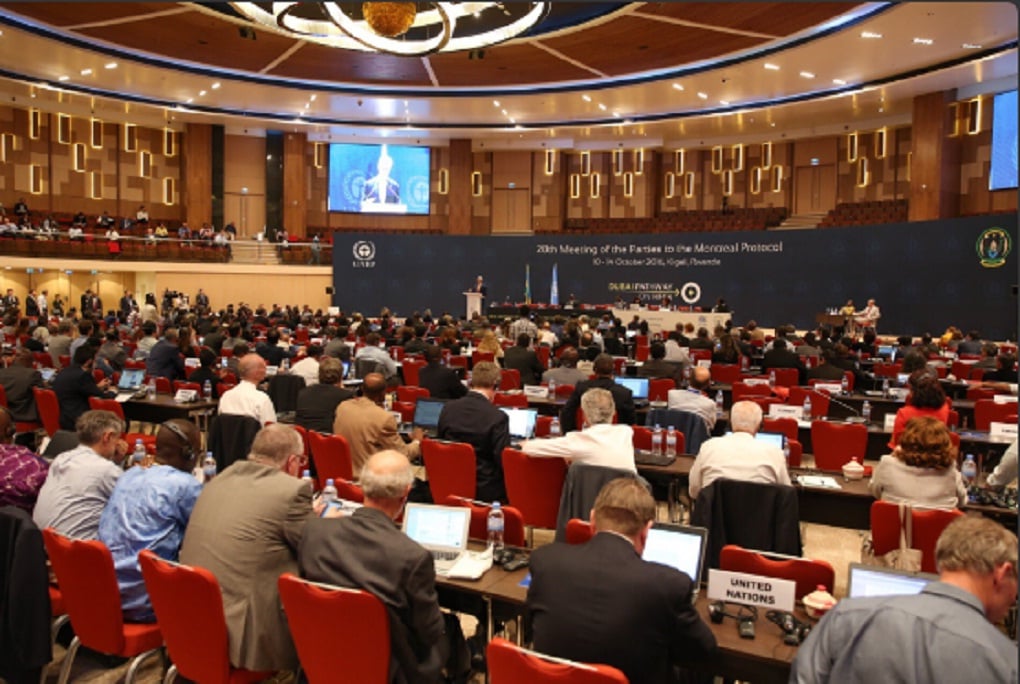They went to Kigali to eliminate hydrofluorocarbons (HFCs) and take 0.5C out of future global warming, and the 170 countries that successfully negotiated an amendment to the Montreal protocol treaty agreed to get rid of 90% of them. Not bad for four days and three long nights of hard work.
The Kigali deal on HFCs is in fact fiendishly complicated and has taken years to negotiate in various technical and political forums. The final agreement, announced on Saturday morning caps and reduces the use of HFCs in a gradual process beginning in 2019.
More than 100 developing countries will start taking action from 2024, a date that has sparked concern from some groups that the changes will be implemented too slowly. A small group of countries, including India, Pakistan and some Gulf states, pushed for and secured a later start – 2028 – on the grounds that their economies need time to grow. But that is three years earlier than India, the world’s third-worst polluter, had first proposed.
The result was achieved thanks to several factors: an ambitious scheme to give countries different time scales in which to phase out HFCs; major chemical and food companies accepting change; the determination of US secretary of state John Kerry to agree a plan before the presidential election; and developing countries agreeing to invest heavily in new technologies.
Rich countries, including the US, Japan and Europe, will start phasing out synthetic HFCs in 2019, China in 2024, and India and less ambitious countries in 2028. The deal reflects countries’ differing levels of development. Because nearly all HFCs are made by a handful of giant western chemical companies and are used in air-conditioning units and cooling systems made and sold in rich countries, it was relatively easy for their governments to put pressure on a single global industry. Alternatives such as hydrocarbons, ammonia and CO2 are widely available, safe, approved and on the market.
Worldwide use of HFCs has soared in the past decade as rapidly growing countries such as China and India adopted air-conditioning in homes, offices and cars. But HFC gases are thousands of times more destructive to the climate than carbon dioxide, and scientists say their growing use threatens to undermine the Paris accord, agreed last year by 195 countries.
The deal will make little difference to rich countries. The EU had already started to phase out HFCs and since 2011 had banned their use in cars. Many global food and drink companies – Coca Cola, Pepsico and Unilever among them – have already started to replace fluorinated gases with climate-friendly and natural refrigerants, which are more energy-efficient and can save money.
The new agreement is welcomed by many chemical and manufacturing companies because it gives them green kudos and market advantage over inferior products made in poor countries.
But it was much harder for India, China and other developing countries to strike a deal. Their companies have relied on old refrigeration and coolant technologies, and will now have to invest in R&D and upgrade or replace factories and equipment.
Just as in wider climate talks, they accepted that they are part of the problem and may be on track to become the main HFC users, but insisted that, like climate change itself, this is primarily a western problem foisted on them.
The deal keeps the Paris agreement on track and is a vital step towards reducing global emissions. Coming on the heels of a new deal to cap aviation emissions, and just weeks before the shipping industry sets about cleaning up its act and UN climate talks resume, it is overwhelmingly positive.
But the Kigali meeting need never have happened. HFCs were widely recognised as powerful greenhouse gases many years ago, and though governments deliberately missed the chance to eliminate them in 1987, they agreed in the Montreal Protocol to phase out CFCs and protect the ozone layer.

Worldwide use of HFCs has soared in the past decade as rapidly growing countries such as China and India adopted air-conditioning in homes, offices and cars. Photo/BBC
The ozone hole is slowly recovering, and HFCs are now seen as just a small part of the climate change problem. If only it took just a few nights of negotiations to eliminate fossil fuels, too.
Click here to read the original article.


